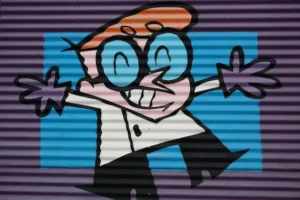Are you an animator who dreams of turning your characters and stories into more than just animated shorts or features? If so, licensing and merchandising might be the answer for you. With the right strategy, you can turn your animations into profitable products that extend far beyond the screen.
What is Licensing and Merchandising?
Licensing and merchandising is the process of creating consumer products based on intellectual property, such as characters, designs, and storylines. It allows creators to extend their brand beyond their initial medium and to build a loyal fanbase that can be tapped into for additional revenue streams.
The key to successful licensing and merchandising is creating characters and stories that resonate with audiences and have the potential to be turned into consumer products. Once you have a solid foundation, you can begin to explore the world of licensing and merchandising.
The Benefits of Licensing and Merchandising
Licensing and merchandising can be a lucrative addition to your animation business. Here are some of the benefits:
1. Diversified Revenue Streams
By licensing your characters and stories to consumer products, you can create new revenue streams that extend beyond the initial release of your animation. This can provide a more stable income and help to fund future projects.
2. Increased Exposure
Merchandise can serve as a form of advertising, increasing exposure to your brand and characters. If someone sees your character on a t-shirt or a toy, they may become interested in your animation and seek it out.
3. Building a Fanbase
Merchandise can also help you build a fanbase that can be tapped into for future projects. Fans who love your characters and stories may be more likely to support future endeavors, such as a sequel or a spin-off.
Challenges of Licensing and Merchandising
While there are many benefits to licensing and merchandising, there are also some challenges to consider:
1. High Costs
Creating consumer products can be expensive, particularly if you are working with a third-party licensee. You may need to invest in product design, production, and distribution, which can be a barrier for small animation studios or independent animators.
2. Licensing Agreements
When licensing your intellectual property, it’s important to carefully consider the terms of the agreement. You will need to ensure that you retain control over your brand and characters while also allowing the licensee the freedom to create products that resonate with consumers.
3. Maintaining Brand Consistency
One of the biggest challenges of licensing and merchandising is maintaining brand consistency across all consumer products. Your characters and stories must remain recognizable and true to their original form, or you risk damaging your brand and alienating fans.
How to Get Started
If you’re interested in licensing and merchandising your animations, here are some steps to get started:
1. Create a Strong Brand
You must establish a powerful, popular brand before you can license your stories and characters. Put your energy into developing distinct, enduring characters and narratives that have the potential to become consumer goods.
2. Research Potential Licensees
Once your brand is strong, you can look into potential licensees. Look for businesses that have a track record of success and have experience producing consumer goods in your niche.
3. Negotiate the Terms of the Agreement
Negotiate the terms of the license agreement once you’ve found potential licensees. Consult a lawyer to make sure the terms are acceptable.
Finding the Right Partners
Find the right partners to collaborate with if you’re thinking about licensing and selling your animation. Finding a licensing agent, merchandising business, or both may be necessary for this.
You can negotiate contracts with producers and retailers to create and market products based on your animation with the aid of a licensing agent. Normally, they’ll take a portion of any royalties or payments you make in return for their services.
A merchandising firm, on the other hand, can assist you in developing and producing products based on your animation and manage the logistics of production, distribution, and sales. They could also contribute original ideas to marketing plans and product designs.
Make sure potential partners have a solid track record and reputation in the industry by conducting research on them before deciding to work with them. Additionally, you should ensure that working with them gives you a sense of comfort and that their values and objectives are compatible with your own.
Protecting Your Intellectual Property
One of the biggest challenges in licensing and merchandising your animation is protecting your intellectual property. This involves ensuring that your animation is properly trademarked and copyrighted, and taking legal action against any unauthorized use or infringement.
Working with a lawyer who specializes in intellectual property law can help you navigate these challenges and ensure that your rights are protected. They can also help you negotiate to license and merchandising deals, and review contracts to make sure they’re fair and favorable.
Maximizing Your Profit Potential
It’s crucial to think strategically and creatively about product development and marketing if you want to maximize your licensing and merchandising profit potential. This might entail creating a variety of products that appeal to various market segments and price points, as well as making investments in targeted marketing and advertising campaigns to increase brand recognition and boost sales.
Additionally, you should keep abreast of market developments and consumer tastes, and you should be prepared to modify your tactics as necessary. You can stay ahead of the competition and establish a thriving licensing and merchandising business by keeping an eye on the market and utilizing new technologies and platforms.
Conclusion
Licensing and merchandising can be a lucrative way to monetize your animation and expand your brand. By finding the right partners, protecting your intellectual property, and maximizing your profit potential, you can turn your animations into profitable products that resonate with consumers and stand the test of time.



